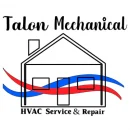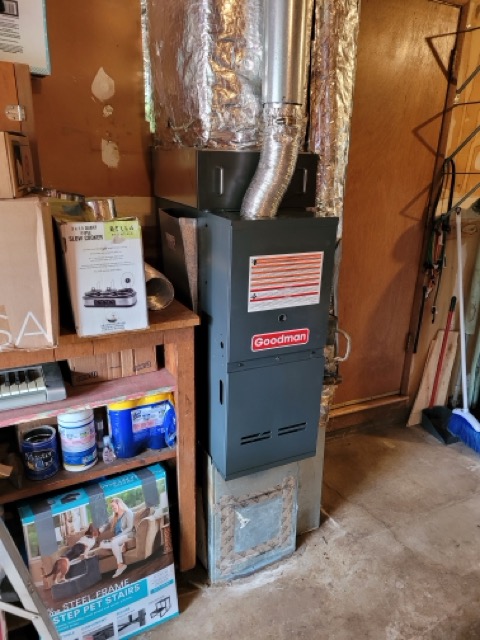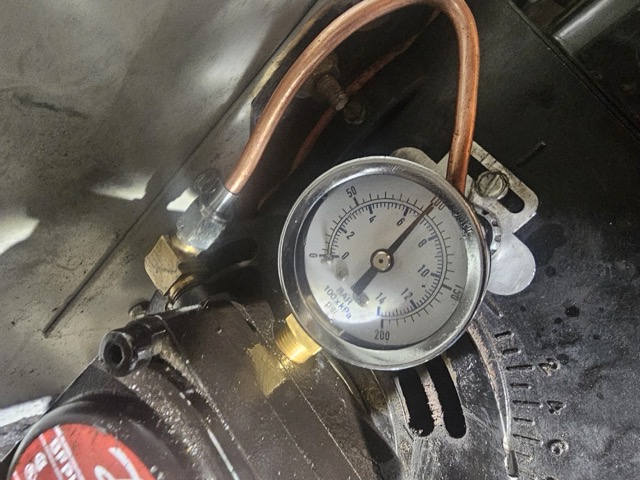Electric vs. Gas Heating in Commercial Buildings: Should You Retrofit or Replace?
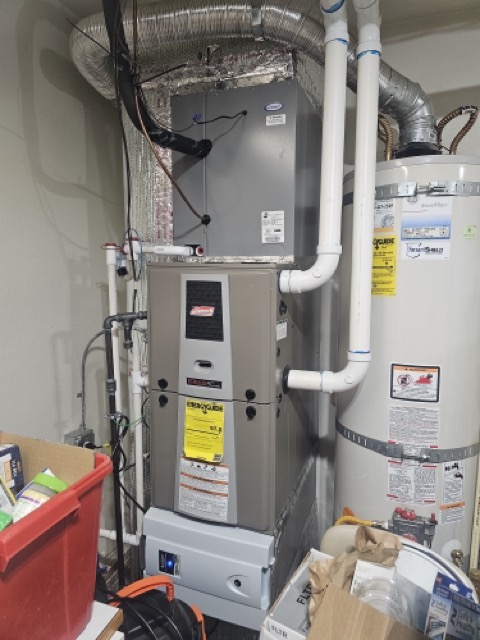
Get the Right Commercial Heating Service Today
When it comes to heating commercial buildings, property managers, business owners, and facility operators face a critical choice: electric or gas? Both systems have been widely used in commercial HVAC for decades, but as energy costs fluctuate, sustainability goals evolve, and building regulations tighten, the debate over which is better—and whether to retrofit or replace an existing system—has taken on renewed urgency.
If your building still uses a traditional gas heating system, you may be wondering if it’s time to switch to electric. Should you invest in a full upgrade or stick with what you have? This blog breaks down the key differences between gas and electric heating in commercial settings, and what to consider when retrofitting or replacing your current system.
Understanding Gas vs. Electric Heating in Commercial HVAC
Before diving into retrofit considerations, it’s helpful to understand how these systems function and how they perform in real-world commercial environments.
Gas Heating Systems in Commercial Buildings
Commercial gas heating systems use natural gas or propane to generate heat, typically through a furnace, boiler, or rooftop unit. These systems heat air or water, which is then distributed through ductwork or radiators.
Pros:
- Fast, powerful heating – Ideal for larger spaces or colder climates.
- Lower fuel costs – Natural gas is often cheaper than electricity, especially in areas with cold winters.
- High heating capacity – Gas systems handle heavy loads efficiently.
Cons:
- Carbon emissions – Natural gas combustion releases greenhouse gases.
- Safety concerns – Gas leaks, combustion issues, and carbon monoxide are all risks.
- Regulatory pressure – Many cities are moving to limit or phase out natural gas usage.
Electric Heating Systems in Commercial Buildings
Electric systems generate heat using electrical resistance or heat pumps. They are used in packaged systems, split systems, ductless mini-splits, and VRF/VRV systems.
Pros:
- Clean energy potential – Can be powered by renewables like solar or wind.
- No combustion byproducts – Eliminates CO2 and carbon monoxide risks.
- Simplified infrastructure – Doesn’t require gas lines or exhaust systems.
Cons:
- Slower heating – May struggle to keep up in large or poorly insulated buildings.
- Higher operating costs – Electricity rates are typically higher than natural gas in many regions.
- Requires electrical capacity – Some buildings may need upgrades to handle the added load.
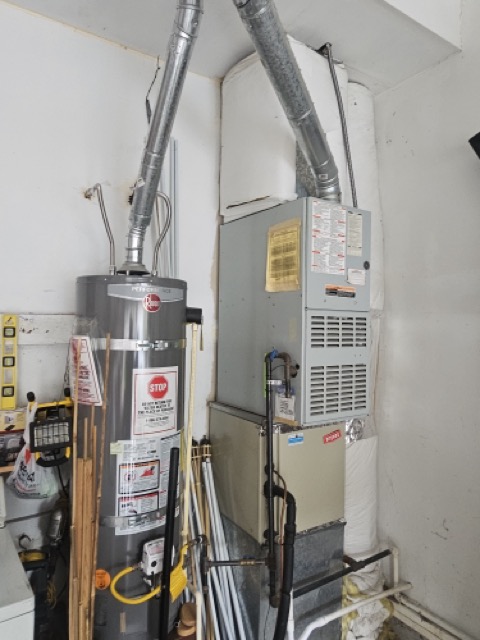
How to Decide: Should You Retrofit or Replace?
Retrofitting your commercial HVAC system involves upgrading or modifying components (like burners, heat exchangers, or controls) without fully replacing the entire system. Replacing the system, on the other hand, means removing the existing infrastructure and installing something new—often an electric unit when moving away from gas.
So, how do you know which path to take?
Key Considerations for Commercial Retrofit or Replacement
Age and Condition of the Current System
If your gas system is over 15–20 years old, chances are it’s near the end of its useful life. Older systems tend to be less efficient, break down more often, and lack modern safety and efficiency features. In these cases, a full replacement is usually more cost-effective than investing in retrofits or temporary fixes.
If your system is relatively young (under 10 years), retrofitting components like thermostats, burners, or control panels may extend its life while improving performance.
Building Use and Load Requirements
Electric heating may be sufficient for office buildings, schools, or small retail spaces, especially in milder climates. But in manufacturing plants, warehouses, or high-occupancy buildings, gas might still provide better load management—especially in cold regions where rapid, high-output heating is critical.
Conducting a professional HVAC load analysis is the first step in determining whether an electric system can meet your building’s specific needs without overburdening your infrastructure or creating uneven comfort levels.
Infrastructure and Electrical Capacity
Switching from gas to electric may require more than just changing equipment. You’ll need to assess whether your building’s electrical panel can handle the increased load. In some cases, upgrades to service lines, transformers, or backup systems may be necessary.
This additional cost is one of the biggest deciding factors in retrofit vs. replace decisions. If your electrical capacity is already near its limit, a full transition to electric may require substantial capital investment.
Environmental Goals and Regulations
Cities like New York, San Francisco, and Seattle are beginning to restrict or ban natural gas in new construction and even major retrofits, in a push to decarbonize buildings and improve air quality.
If your business has environmental, social, and governance (ESG) goals, or you operate in a region facing regulatory pressure, transitioning to electric heating can help meet carbon reduction targets. Electric systems also future-proof your building against upcoming restrictions.
Operating Costs and Long-Term ROI
Though gas heating systems often have lower operational costs due to cheaper fuel, electric systems—especially high-efficiency heat pumps—can offer long-term savings when paired with renewable energy or modern building management systems (BMS).
It’s important to run the numbers. A cost-benefit analysis that includes:
- Initial investment
- Energy rates
- HVAC maintenance frequency
- Equipment lifespan
- Potential incentives or rebates
can give you a clearer picture of your system’s true ROI over 10–15 years.
Disruption to Business Operations
For buildings that cannot afford prolonged downtime (like hospitals, hotels, or 24/7 production facilities), retrofitting might be preferable due to its reduced installation timeline and fewer infrastructure changes.
However, full replacements can often be phased or scheduled during off-hours or off-season windows to minimize impact. A qualified commercial HVAC contractor will help plan installation with minimal business interruption.
The Process of Switching from Gas to Electric Heating
If you’ve decided to move forward with an upgrade from gas to electric, here’s what the process generally looks like:
1. Site Assessment and Load Analysis
An HVAC engineer will assess your building, analyze heating/cooling loads, and determine your system requirements.
2. Equipment Selection
Depending on your goals, this could include:
- Electric furnaces or boilers
- Ductless mini-splits
- Variable Refrigerant Flow (VRF) systems
- Electric rooftop units (RTUs)
- Air-source or ground-source heat pumps
3. Infrastructure Review
An electrician and HVAC team will evaluate the building’s power supply to determine if upgrades are needed.
4. Project Planning
You’ll work with the contractor to:
- Schedule phased installations
- Apply for permits and approvals
- Plan for any temporary heating needs
5. Installation and Commissioning
Once installed, the system will be tested, balanced, and integrated with your building’s control systems.
Rebates, Incentives, and Financial Assistance
One advantage of moving toward electric heat replacement is access to rebates and financial incentives aimed at supporting energy-efficient upgrades. These may be available through:
- Local utility companies
- Federal or state clean energy programs
- City-wide decarbonization initiatives
Programs may include:
- Rebates for high-efficiency heat pumps
- Grants for electrification of commercial buildings
- Tax deductions under the IRS Section 179D Energy Efficient Commercial Buildings Deduction
Talk to your contractor or energy consultant to explore what’s available in your area—these savings can significantly reduce the cost of conversion.
Employee Comfort and Indoor Air Quality: An Overlooked Factor
While cost and efficiency are major drivers in deciding whether to retrofit or replace your commercial heating system, the impact on indoor comfort and air quality is just as important—especially when it comes to workforce productivity and satisfaction.
Older gas systems can struggle to provide consistent temperatures throughout a building, especially if ductwork is outdated or zoning controls are limited. Employees may complain about hot or cold spots, stuffy air, or fluctuating temperatures, all of which can impact morale and focus. Electric systems—particularly those using modern heat pump or VRF technology—offer more precise temperature control and better zoning capabilities. This results in a more stable and comfortable environment, even across large or multi-level facilities.
In terms of air quality, gas systems that are improperly ventilated or without regular HVAC maintenance can emit combustion byproducts like nitrogen dioxide (NO₂) and even trace amounts of carbon monoxide (CO). Though these are typically vented outdoors, cracks in heat exchangers or faulty ducts can pose health risks over time. Electric systems, on the other hand, produce no indoor combustion gases—making them cleaner, safer, and more aligned with wellness goals, especially in schools, healthcare settings, or shared office environments.
Future-Proofing Your Building: Thinking Beyond Today
Choosing a heating system isn’t just about solving today’s problems—it’s about preparing your facility for the next 10, 15, or even 20 years. Energy infrastructure, government policy, and tenant expectations are evolving rapidly, and your HVAC system should support—not hinder—your building’s long-term value.
Electrification is gaining momentum in both public and private sectors, with more building codes, municipalities, and ESG-minded investors favoring all-electric commercial infrastructure. Retrofitting or replacing your HVAC system with electric-compatible components today can help avoid costly compliance retrofits later, particularly in jurisdictions moving toward low-carbon building standards.
Future-proofing also supports real estate valuation. Environmentally efficient buildings often attract higher-quality tenants, reduce turnover, and perform better in commercial lease negotiations. An upgraded electric heating system can also integrate more easily with solar energy, smart building systems, and automated energy management platforms—positioning your building as a leader in sustainability and operational efficiency.
Electric vs. Gas Heating—Which Is Right for Your Commercial Building?
There’s no one-size-fits-all answer when it comes to choosing between electric and gas heating in commercial HVAC. The best solution depends on your building’s age, layout, energy goals, budget, and future use.
Retrofitting may be ideal if your current gas system still has usable life left with HVAC maintenance and you need to improve performance or efficiency without major infrastructure changes.
Replacement—particularly switching to electric—makes the most sense when:
- Your system is over 15–20 years old
- You’re facing repeated breakdowns
- Your business has carbon reduction targets
- Regulatory changes are on the horizon
- You’re looking to modernize and future-proof your building
Whatever you decide, partnering with a commercial HVAC specialist will help you make the right investment—one that improves efficiency, reduces risk, and supports your business’s operational and environmental goals well into the future.
A Top Rated HVAC Contractor



